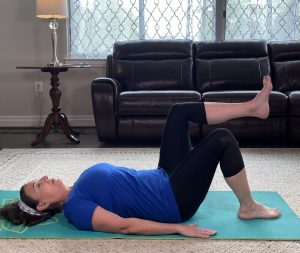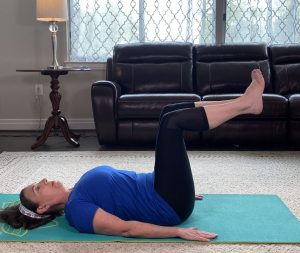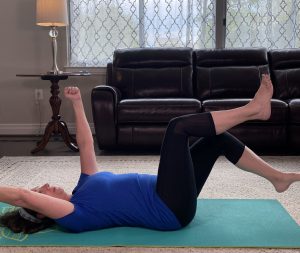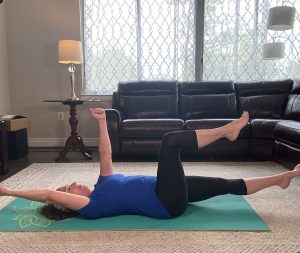Sit-ups use to rule the fitness world. For many years, sit-ups were seen as the golden ticket to stronger abs and a trim waistline. As a fitness-crazed teenager, I often did 500 sit-ups a day! No doubt this likely contributed to my back pain and spinal injuries as an adult. Sit-ups only work the rectus abdominis, one of the many muscles necessary to build a strong core. Additionally, the strong abdominal flexion movement that occurs when performing a sit-up can damage spinal ligaments, discs, and vertebrates. If you have osteoporosis, doing sit-ups can also lead to spinal compression fractures.
Thank goodness exercise has evolved to include safer and more effective ways to strengthen your abdominal muscles along with all the core muscles.
In my previous blog, I talked about the “core”, how it is made up of many different muscles throughout the trunk and how these muscles have to work in harmony to provide stability and a foundation for efficient movement. I also gave you 2 easy ways to learn how to engage your core muscles. Now it is time for exercise!
The Dead Bug. Certainly not something any of us aspire to be but a very effective exercise for strengthening the core muscles.
Here’s how you do the Dead Bug exercise.
Starting position: Lie on your back with your knees bent, feet flat on the floor. Activate your core by exhaling through pursed lips, like you are blowing out a candle or by bracing in preparation for a punch to the stomach. When your core is activated, your spine should be in a neutral position and should not be rounded towards the floor or arched.
Exercise Movement: Raise one knee up to hip height, keeping your knee bent at 90 degrees, and then back down to the floor. Continue by alternating lifting one knee up and then the other while keeping your core muscles activated and engage. Aim to do 10-20 repetitions. Be sure your spine maintains a neutral position and doesn’t flex or arch during the exercise. Be sure to move slowly and steadily, exhaling as you go.
Precautions: If at any time while you are performing this exercise your back begins to arch or flex, stop, take a break, re-engage your core and continue.
Starting position: Lie on your back with both legs raised up to hip height with knees and hips at 90-degree angles. Activate your core.
Exercise Movement: Slowly lower one foot to the floor and then back up to the starting position. Next, lower the other foot to the floor. Aim to do 10-20 repetitions. Be sure your spine maintains a neutral position and doesn’t flex or arch during the exercise. Be sure to move slowly and steadily, exhaling as you go.
Precautions: If at any time while you are performing this exercise your back begins to arch or flex, stop, take a break, re-engage your core and continue.
Starting position: Lie on your back with your arms extended straight up towards the ceiling. Lift your feet off the ground so your knees are in line with your hips and your hips and knees are at a 90-degree angle as above. Engage your core.
Exercise Movement: Slowly extend your right arm over your head while at the same time lowering your left foot to the floor, keeping the knee in a flexed position. Return to the starting position and then switch and reach your left arm overhead and place your right foot on the floor. Perform 10-20 repetitions. Be sure to move slowly and steadily, exhaling as you go. Keep your spine in a neutral position so that it doesn’t flex or arch during the exercise.
Precautions: If at any time while you are performing this exercise your back begins to arch or flex, stop, take a break, re-engage your core and continue.
Starting position: Lie on your back with your knees and hips bent at 90 degrees and your arms extended straight up towards the ceiling. Lift your feet off the ground so your knees are in line with your hips and your knees and hips are at a 90-degree angle (as above). Engage your core.
Exercise Movement: Slowly reach your right arm overhead while simultaneously extending your left leg out straight so it is hovering a few inches above the floor. Return to the starting position and repeat with left arm reaching overhead and right leg extended out straight. Perform 10-20 repetitions. Keep your spine in a neutral position so that it doesn’t flex or arch during the exercise.
Precautions: If up have difficulty keeping your low back in neutral, reduce the motion of your limbs. Only extend your leg and opposite arm as far as you can without your back beginning to arch. When you feel your low back arching, bring your arm and leg back to the center before repeating to the opposite side.
Even though the dead bug exercise is a great way to strengthen your core, it is essential to do it safely and correctly. One of the most common mistakes I see when performing the dead bug exercise is trying to do the exercise too fast. Many people confuse this exercise with the bicycle crunch and try to use speed and momentum to execute the exercise. The truth is, the slower and more controlled you perform the exercise, the more effective it will be at strengthening the core muscles.
The dead but exercise is a great first exercise to start strengthening the core with little risk of injury to the spine. It is an especially good exercise for anyone with back or neck pain or osteoporosis. Maintaining a strong core is going to protect your spine but also improve your balance and posture and even your athletic performance.
Have questions? Reach out and I can guide you through the best exercise to strengthen your core, protect your spine and improve balance and posture.










